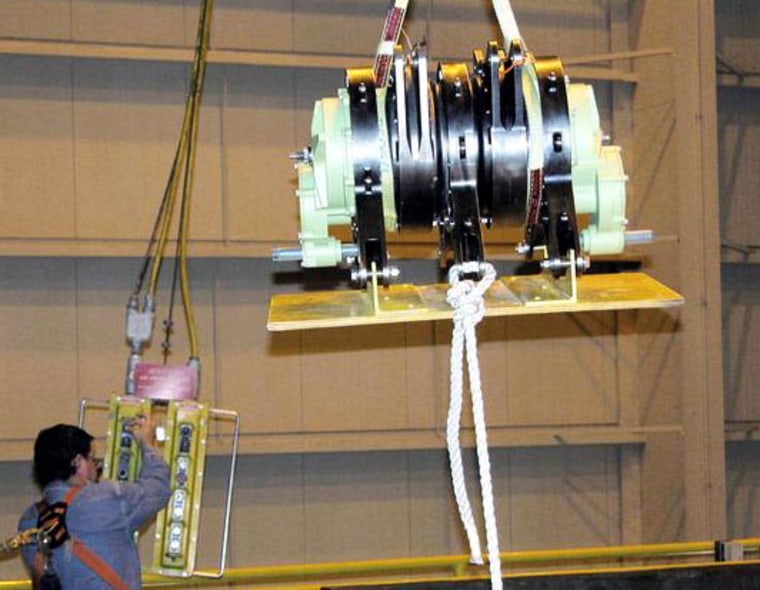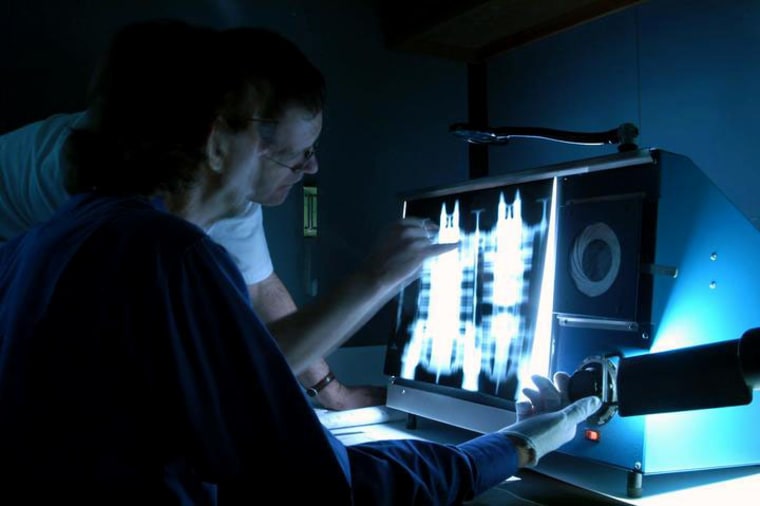All three remaining space shuttle orbiters will undergo extensive tail repairs before they are cleared for flight, NASA officials have decided.
Discovery, Atlantis and Endeavour all must be outfitted with new hardware that is essential for safe landings. The need for the time-consuming repairs drove NASA’s decision to postpone its first post-Columbia shuttle flight six months to March 2005, NASA officials said.
The devices that have to be replaced are called rudder speed brake actuators. Located on the tail of the shuttle, the rudder speed brake helps slow the orbiter and keeps it on course during landings. Although replacing the rudder speed brake actuators is not one of the conditions handed down by the Columbia Accident Investigation Board for returning the shuttles to flight status, it has become what NASA officials have described as the central "pacing item."
"This is definitely the longest pole in the tent," NASA spokesman Allard Beutel said.
Problem suspected before Columbia tragedy
NASA space shuttle program manager Bill Parsons said that NASA engineers were on the scent of the rudder speed brake problem even before the Columbia accident. Corrosion on actuators that control Discovery's body flaps led engineers to inspect the same parts on the shuttle's rudder speed brakes. But before that inspection could take place, he said, the Columbia disaster happened and the fleet was grounded.

During a scheduled overhaul of Discovery last summer, NASA engineers found corrosion on the actuators that open the orbiter’s rudder speed brakes. The corroded actuators were taken out of service and replaced with four spares NASA had in inventory. Further inspection of the Discovery’s original actuators revealed that, at least in one case, a gear had been installed upside down.
Discovery flew 28 missions with the flawed actuator without incident. But had the reversed gear been installed in a different spot, Parsons said, the flaw could have proven fatal. A rudder speed brake actuator failure, he said, would be nothing less than catastrophic.
"Loss of the rudder speed brake would be loss of vehicle [and] loss of crew," Parsons said during a Monday teleconference with reporters.
Further sleuthing conducted
Finding a potentially fatal flaw lurking undetected in hardware that had flown for years prompted NASA to check Discovery’s new actuators for the same problem, and sure enough, another reversed gear was found. Discovery’s new actuators were removed and sent out for repair.
Further sleuthing led NASA engineers to Atlantis, the orbiter picked to fly second and back up Discovery in March in case a rescue mission is needed. NASA had been considering replacing the rudder speed brake actuators on Atlantis with a much newer set from Endeavour, the youngest of the three orbiters. New actuators then would have been ordered for Endeavour, which is not slated to fly until 2006.
But that approach, Beutel said, would have introduced new schedule risk.
If thorough inspection of Endeavor’s rudder speed break actuators revealed the same flaws found on Discovery and Atlantis, Beutel said, NASA would find itself scrambling to come up with four good actuators for Atlantis in time for a spring 2005 flight. Replacing the actuators is not a quick repair.
Many months of work
Beutel said it takes many months of work to remove the actuators and install new ones. Michael Kostelnik, NASA deputy associate administrator for the space shuttle and space station programs, told the NASA Advisory Council at a March 10 meeting in Huntsville, Ala., that the space agency was considering a repair option that, if all did not go well, could delay the shuttle’s return to flight as much as nine months beyond next March.
But the next day, NASA officials decided to take a more conservative approach. Beutel said NASA is now assuming that Endeavour’s actuators are flawed until convinced otherwise and has asked Hamilton Sundstrand to manufacture enough new parts for three orbiters. Discovery’s actuators — spares that have never flown — have been returned to Hamilton Sundstrand for refurbishment and are due back to NASA by May.
Larry McNamara, general manager at Windsor Locks, Conn.-based Hamilton Sundstrand Space Systems, said the company does not have enough parts on hand to build four new actuators for Atlantis in time to support a spring 2005 flight.
"We’ve got enough spare parts in house to build up two of the four actuators for [Atlantis]," McNamara said. "Two of the other actuators had been on a schedule to deliver them early next year. Obviously that wouldn’t support the March launch. So we are working several different paths, including inspecting parts from [Endeavour] to see if we can find enough good parts to build the two needed actuators [for Atlantis]."
In either case, McNamara said, Hamilton Sundstrand expects to be ready to send NASA a full set of flight-worthy actuators for Atlantis by August — early enough to get them installed for a spring flight.
Timing could be tight
Although Discovery has been picked to launch first, NASA wants Atlantis ready to launch within weeks of Discovery’s targeted March 6 launch date should a rescue mission prove necessary. McNamara said Hamilton Sundstrand faces less schedule pressure building actuators for Endeavour. That orbiter is not expected to make its first post-Columbia flight until 2006.
Parsons said Discovery is still on track for a March 2005 return to flight, but Atlantis is tracking about a week or two behind its May target.
NASA’s Beutel did not have a cost estimate for replacing the rudder speed brake actuators across the fleet but said it falls within the $265 million the agency plans to spend this year for changes ordered in the wake of the Columbia accident and the $238 million it has budgeted for 2005.
Parsons also could not estimate the cost of building and installing the new speed brake hardware across the fleet, but acknowledged that Hamilton Sundstrand has been handed a big task.
Parsons also said NASA is investigating how critical hardware like the rudder speed brake actuators managed to escape inspection for more than 20 years.
"I can't tell you why that was never done previously, " Parsons said. "It's something we should have done."
